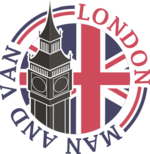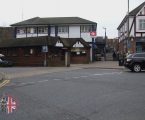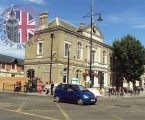The London Borough of Bromley – a Brief Description
Bromley forms part of south east London. The borough covers a territory of well over 57 square miles and has a population estimated at 321 278. It is one of the largest boroughs in Greater London and has many different faces throughout its districts. There are urban, suburban and semi-rural parts scattered across its territory, which makes it a colorful and interesting place. Not to mention that no matter what your preferred place of residence looks like, you will probably be able to find a suitable location here. Some of the areas that are included in the London Borough of Bromley are:
- Eden Park in the BR3 postal area. This nice little suburb consists of low raise houses, many of which date back at least to the 1930s. It is serviced by Eden Park Station, which links the district to Charing Cross, Cannon Street and Hayes. Upper Elmers End Road is the main shopping area here.
- Goddington
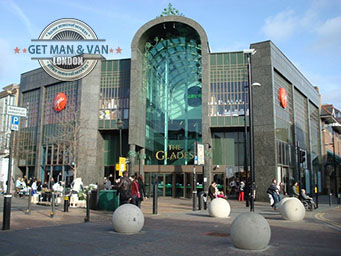 is another leafy suburb you will definitely enjoy living in. It has formed around a green space that has given its name to the district. Goddington Park has a territory of 64 hectares of grass and trees, but also has some of the best sporting facilities in the south east edges of the London metropolitan area – five football pitches, two cricket squares, and two rugby pitches in addition to 10 tennis courts, children’s play areas etc.
is another leafy suburb you will definitely enjoy living in. It has formed around a green space that has given its name to the district. Goddington Park has a territory of 64 hectares of grass and trees, but also has some of the best sporting facilities in the south east edges of the London metropolitan area – five football pitches, two cricket squares, and two rugby pitches in addition to 10 tennis courts, children’s play areas etc. - Anerley is located on the northern border of Bromley. It is relatively near the City, lying just 7 miles from Charing Cross to which it is well connected via rail and buses. The origins of Anerley can be traced back to the beginning of the 19th century when Anerley Gardens – a popular Victorian entertainment district has been created. Soon many grand Victorian houses began to be constructed here and thus the history of Anerley as a residential area began. Currently the district has a rather modern face, which is mainly due to the fact that the area suffered greatly from the bombing during WWII and had to be almost completely rebuilt once the war was over.
- If you are looking for a quiet and well established suburban community in South London, West Wickham may very well turn out to be the place for you. Its history is traced back to the ages pre-dating the Norman Conquest. Manor houses and stately homes were what the area mostly consisted of throughout much of its history, most notably the Manor House Wickham Court, which was built and owned by the family of Anne Boleyn. Other famous residents of West Wickham, past and present, include athlete Judy Oakes, writer Enid Blyton, and actor Stephen Dillane among others.
- St Paul’s Cray
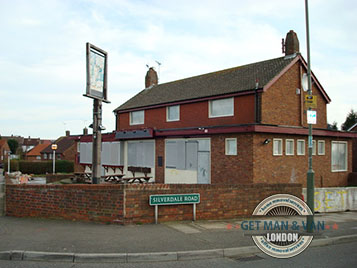 is a fine example of a semi-rural area incorporated into Greater London in recent history. The village is said to have a pretty ancient history that can be traced at least to the Anglo-Saxon period. Today not much is going on in St Paul’s Cray. The village centre is where a small parade of shops can be found. There is also a McDonalds restaurant in the area and a planned football stadium to be built in the near future. If you are looking for peace and quiet but you still want to live in London, St Paul’s Cray might very well turn out the place to be. Another similar village on the outskirts of metropolitan London is Chelsfield.
is a fine example of a semi-rural area incorporated into Greater London in recent history. The village is said to have a pretty ancient history that can be traced at least to the Anglo-Saxon period. Today not much is going on in St Paul’s Cray. The village centre is where a small parade of shops can be found. There is also a McDonalds restaurant in the area and a planned football stadium to be built in the near future. If you are looking for peace and quiet but you still want to live in London, St Paul’s Cray might very well turn out the place to be. Another similar village on the outskirts of metropolitan London is Chelsfield. - As it often happens in London, open green spaces give their name to suburban expansions that emerge around them. That is the case with Bromley Common as well. The common is one of the most notable cricket fields in London. Its connections to the sport are recorded to date back to 1735, when a match between the London Cricket Club and the Kent Cricket Club took place here. Bromley Common is well known to members of the borough’s community because it is now home to several very popular restaurants, delicatessen, hair and beauty salons, the Chatterton Arms pub.
- A major urban centre in Bromley is the post town of Beckenham. It was very popular with rich people in the 19th century who built their country villas here. Today the urban expansion of the capital has changed the face of Beckenham significantly. The marvelous Victorian commercial buildings along Beckenham Road are representative of the character of the area. One of the most distinct landmarks in town is the so called Chinese Garage. It is a garage and a former petrol station. It was built in 1928 in a style imitating a Japanese pagoda. The building is Grade II listed and is currently part of the Peugeot car dealership.
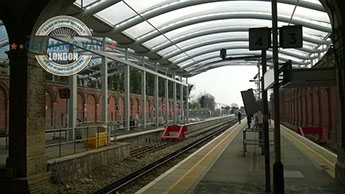 Another major residential and commercial area in Bromley with a distinct urban character is Crystal Palace. Naturally it is named after the famous Crystal Palace building, which was designed for the first World Fair in 1851. Even though the original Crystal Palace burned down in the 1930s, the name still remains. Today Crystal Palace is a vibrant district with booming economy and many desirable properties. Haynes Lane Farmer’s Market is a well known venue here and so are the three extensive celebrated open green spaces which form part of the Crystal Palace district – Crystal Palace Park, Westow Park and Stambourne Woods.
Another major residential and commercial area in Bromley with a distinct urban character is Crystal Palace. Naturally it is named after the famous Crystal Palace building, which was designed for the first World Fair in 1851. Even though the original Crystal Palace burned down in the 1930s, the name still remains. Today Crystal Palace is a vibrant district with booming economy and many desirable properties. Haynes Lane Farmer’s Market is a well known venue here and so are the three extensive celebrated open green spaces which form part of the Crystal Palace district – Crystal Palace Park, Westow Park and Stambourne Woods.- Penge is often described as the archetype for the commuter suburb. It used to be a notorious entertainment district in the 1870s and it has often been mentioned in the media in modern times as well, because of its high density of notable residents such as Bill Wyman of The Rolling Stones, Prime Minister Andrew Bonar Law and painter Camille Pissarro. It was noted that there are 25 pubs to the square mile in Penge in the past, and even today there is a high concentration of such establishments in the district. Many of them are concentrated on and around Maple Road, though few preserve their original names from the Victorian Era.
About author
-

-
Jeremy Oliver
Previously serving as a logistics coordinator, Jeremy's comprehensive understanding of the industry gives him the ability to translate complex procedures into easy-to-understand blog posts. He has a particular knack for tackling the intricacies of London's removals scene, from the congested roadways to the unique challenges of navigating historic neighborhoods. As an authentic Londoner, Jeremy combines practical knowledge with his inherent love for the city, offering readers not only information on man with van removals but also local insights and valuable tips.
